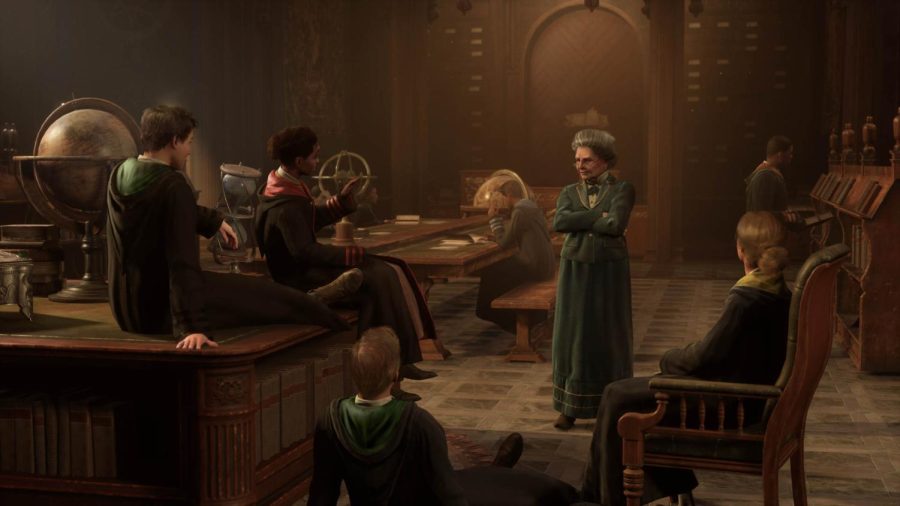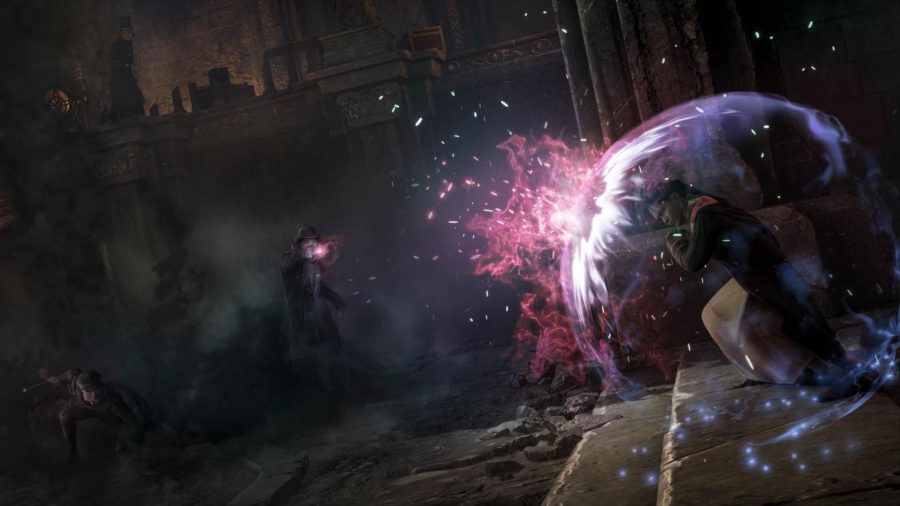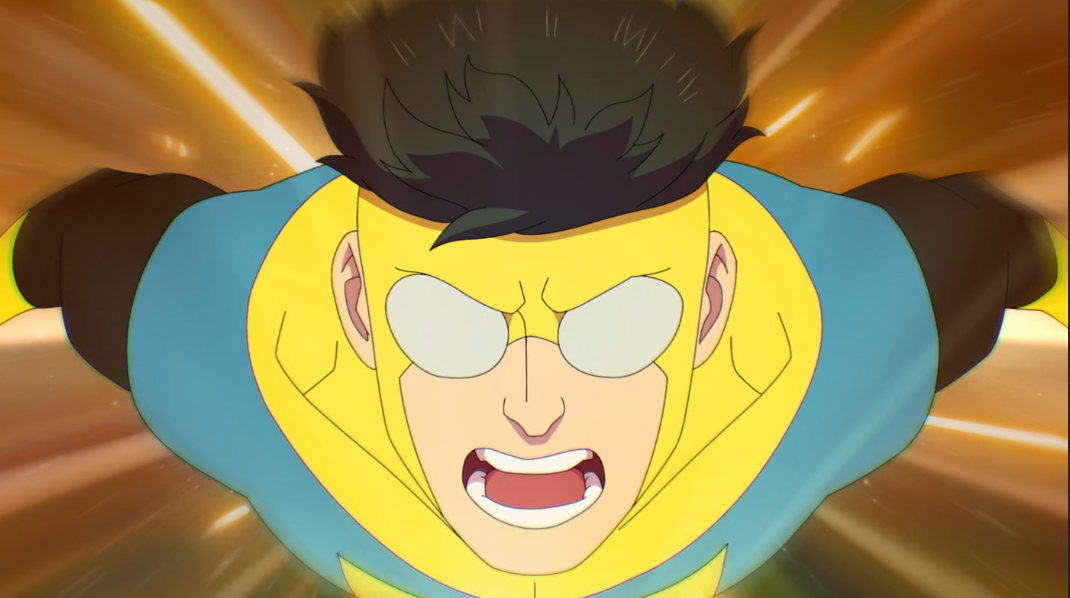‘Hogwarts Legacy’: A Familiar, Fantastic Frontier
March 18, 2023
Disclaimer: It’s undeniable that comments made by “Harry Potter” author JK Rowling have been insensitive and harmful to the trans community. While the developers have stated that Rowling is “not directly involved” in the game, it is still connected to the Harry Potter IP. This review will only consider the game as a product and nothing else.
Whatever this review may mean, trans women are women, trans men are men and Transgender Lives Matter.
Ever since the 2020 leak that showed preliminary gameplay of a wizard interacting with magical beasts and battling goblins confirmed that there would indeed be an RPG-style Harry Potter game, I’ve kept my ear to the ground waiting for more news.
Being a fan of Harry Potter, I of course knew the expansive story from the books and had seen the way the world and magic were realized in the movies. I felt fairly confident that this was the perfect fodder for what could be a genuinely exciting adventure game.
So, is it?
A Long Legacy

Over the last three decades there have been dozens and dozens of Harry Potter games, some being the EA-developed movie tie-in games, some mobile pay-to-win games and, of course, the ever-charming LEGO games.
The movie tie-in “Harry Potter and the Order of the Phoenix” game from EA that came out shortly after the movie’s release in 2007 was the first real attempt at creating a Hogwarts from the movies that players could explore.
The problem with the movie tie-in games is the short turnaround. This coupled with the need to create the game for multiple ports made it impossible to dedicate the necessary time to reach the full potential a Harry Potter game had.
Each of the past games has their own merits, sure. However, none of them has been singularly memorable. It’s no surprise that Potter fans have waited for the kind of game many of these tried to be.
From Page to Screen to Screen

“Hogwarts Legacy,” developed by Avalanche Software, follows an original storyline set in the late 1800s. The story follows a protagonist who becomes embroiled in a goblin uprising, discovers their strange powers and struggles to get their assignments done on time.
From the first glance at the mere silhouette of Hogwarts castle it’s apparent that hours of work were put into making it look and feel just right. Seriously, every single square inch of it is explorable.
The game’s traversal is quite similar to other lauded RPGs and open-world games. The open-world combat feels similar to that of “The Witcher 3: Wild Hunt” or “Red Dead Redemption 2.” The dungeon exploration and puzzle solving were reminiscent of “Jedi: Fallen Order.” “Hogwarts Legacy” easily rubs shoulders with its contemporaries.
Always Something Happening
A common gripe with open-world games can be that despite their size, they often feel empty. To combat this, developers will employ what is called the “40-second rule” to keep players engaged as they traverse their game.
In “Hogwarts Legacy,” it feels like every 10 seconds there is something happening or something to interact with. For example, a player may be hurrying along a long corridor only for a distant voice to remind them that they do, in fact, have snot on their nose.
Who said it? Was it a passing ghost, moving portrait, student or Peeves the Poltergeist? None of the above — it was actually a wooden gargoyle carved into a door frame. Innocuous, but still another example of how dynamic this game is.
Other examples of this rule in action are occasional puzzles, interactive objects, NPC dialogue, points of interest and many, many collectables that sometimes like to whiz about overhead.
Startlingly Large
The player has a vast arsenal of spells, potions and magic plants to assist them through the open-world exploration and various combat scenarios they find themselves in. The abundance of choices can lead to some pretty creative combat combos or puzzle solutions.
The weenie that guides the player to their next objective is not constrained to the mini-map so players can still explore without needing to take their eyes off the focal point. The actual open-world is startlingly large, full of hamlets, monster nests and dark wizard camps, but Hogwarts is the focal point.
Many times throughout my gameplay I found myself reenacting the Leonardo DiCaprio pointing meme whenever I saw a location or thing I recognized from the movies or books. Even then, It’s not exactly a one-to-one recreation and that is a good thing.
The Great Hall, for example, carries the same general design from the movies but is noticeably larger with a few added areas and set pieces. It’s a way for Avalanche Software to differentiate themselves from the other entries in the Harry Potter franchise and put their own unique spin on what is already familiar.
I had the chance to study abroad in England this past summer and one day I toured Christ Church Divinity School in Oxford. I stumbled across the spot where the first scene with Professor Minerva McGonagall was filmed, and when I found myself in that exact location recreated in the game I audibly said, “No freaking way.”
There was the location I physically stood in myself and had seen so many times on screen now realized in this game. This little anecdote is a microcosm of what playing Hogwarts Legacy has been like.
Drawbacks
When looking at the past catalog of games developed by Avalanche Software, they definitely do not seem like a first choice to develop a AAA open-world RPG for a major IP. However, for their first major foray into this particular games space, it’s a compelling start. Not that there are not some growing pains.
It can take a fairly long while for all the basic abilities and game mechanics to be unlocked for the player. So, sticking to the main campaign and not engaging too much in side-quests and exploration for almost the first quarter of the game is necessary.
Graphically, the game is beautiful, but at the cost of occasionally noticeable texture loading and asset pop-ins when the game is loading a new area. This will happen sometimes when the game cuts to black to load an animation or character, breaking the immersion.
Players that want to prioritize gameplay with Performance Mode will have to sacrifice the rich textures and dynamic lighting that come with Fidelity mode. Of course, that is to be expected, but the vast contrast between the two modes is undeniable.
NPCs in general can sometimes feel like set dressing, rather than believable inhabitants of the world. They will have conversations with each other and there are occasional funny interactions, but bumping into them doesn’t even yield the standard “watch where you’re going” response — instead, they just walk through the player.
There’s definitely room for improvement, but as I mentioned earlier, it’s off on the right foot.
Accept the Acceptance Letter?
In its first two weeks after release, “Hogwarts Legacy” sold over 12 million copies and earned $850 million worldwide, meaning that there is still quite a lot of enthusiasm for the Wizarding World. While the franchise may be struggling financially at the box office, it’s excelling with theme parks and streaming. Could the games space be a new frontier for this franchise?
The game is almost a love letter to fans of Harry Potter regardless of if they have steeped themselves in the lore or if they’ve only ever had a passing fancy for the movies. There’s real, tangible passion put into every polygon and pixel.
It’s even open to non-fans. It’s perfect for gamers that just want to get lost in a gigantic game that’s relatively easy to play with no shortage of things to do.
So, should you accept your acceptance letter? If you’ve made it this far then the answer should be obvious.













